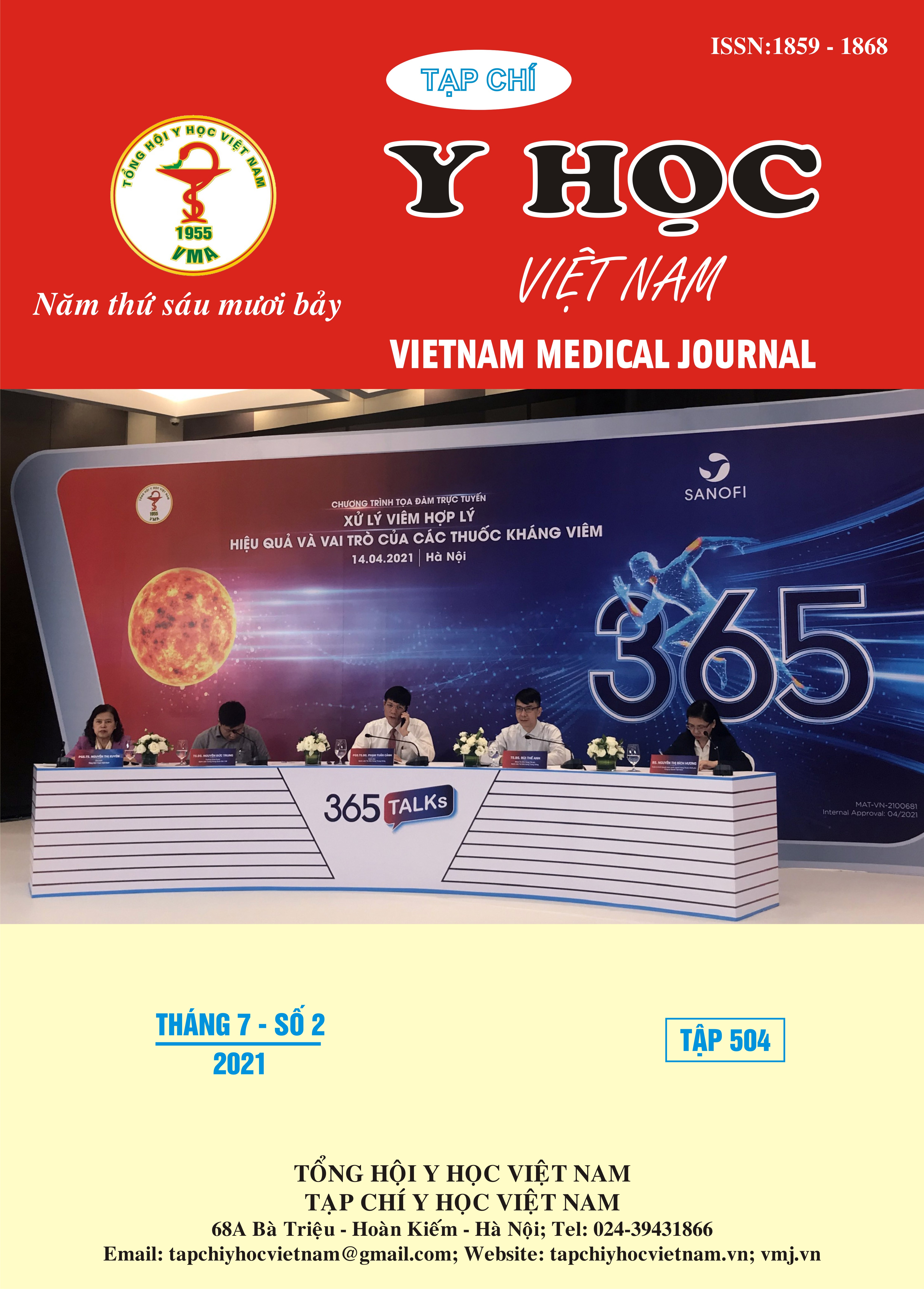SURVEYING THE CONCENTRATION OF SERUM URIC ACID IN PATIENS WITH END-STAGE RENAL DISEASE
Main Article Content
Abstract
Objectives: To investigate serum uric acid levels, the percentage of patients with increased serum uric acid and factors related to increased serum uric acid in patients with ESRD on conservative treatment and on hemodialysis. Methods: A cross-sectional descriptive study was performed on 60 patients with ESRD on conservative treatment and 60 patients with ESRD on hemodialysis to investigate the concentration of serum uric acid. Results: The concentration of serum uric acid in the group of patients with ESRD on conservative treatment was 490.0 ± 131.6 µmol/L, in the group of patients with ESRD on hemodialysis was 500.28±95.48µmol/L (the difference was not statistically significant, p > 0,05). The proportion of patients with ESRD with increased serum uric acid was 85.0%, in which the conservative treatment group was 83.3% and the hemodialysis group was 86.7% (the difference was not statistically significant, p > 0.05). In the group of patients with ESRD on conservative treatment, the older the age was, the higher the serum uric acid concentration and uric acid levels are higher in men than in women (p <0,05). There was a moderate positive correlation between serum uric acid concentration with maximum blood pressure index (r = 0.423; p < 0.01) and mean blood pressure (r = 0.321; p < 0.01). No correlation was found between serum uric acid levels with BMI and dialysis time. Conclusion: The study showed that the serum uric acid concentration was elevated in the group of ESRD patients and there was a positive correlation between the concentration of serum uric acid with blood pressure index.
Article Details
Keywords
serum uric acid, ESRD
References
2. Corry DB, Eslami P, Yamamoto K, Nyby MD, Makino H, Tuck ML (2008). “Uric acid stimulates vascular smooth muscle cell proliferation and oxidative stress via the vascular renin-angiotensin system”. J Hypertens. 2008 Feb;26(2):269–75.
3. Doualla M, Halle MP, Moutchia J, Tegang S, Ashuntantang G (2018). “Determinants of hyperuricemia in non-dialysed chronic kidney disease patients in three hospitals in Cameroon”. BMC Nephrol. 2018;19(1):1–9.
4. Kang D-H, Chen W (2021). “Uric acid and chronic kidney disease: new understanding of an old problem”. Semin Nephrol. 2011 Sep;31 (5): 447–52.
5. Kim K, Go S, Son HE, Ryu JY, Lee H, Heo NJ, et al (2020). “Association between Serum Uric Acid Level and ESRD or Death in a Korean Population”. J Korean Med Sci. 2020 Jul; 35(28):e254.
6. Levin A, Stevens PE (2014). “Summary of KDIGO 2012 CKD Guideline: Behind the scenes, need for guidance, and a framework for moving forward”. Kidney Int [Internet]. 2014;85(1):49–61.
7. Murea M, Tucker BM (2019). “The physiology of uric acid and the impact of end-stage kidney disease and dialysis”. Semin Dial. 2019 Jan;32(1):47–57.
8. Miyaoka T, Mochizuki T, Takei T, Tsuchiya K, Nitta K (2014). “Serum uric acid levels and long-term outcomes in chronic kidney disease”. Heart Vessels. 2014 Jul;29(4):504–12.
9. Zawada AM, Carrero JJ, Wolf M, Feuersenger A, Stuard S, Gauly A, et al (2020). “Serum Uric Acid and Mortality Risk Among”. Kidney Int Reports [Internet]. 2020;5(8):1196–206.


